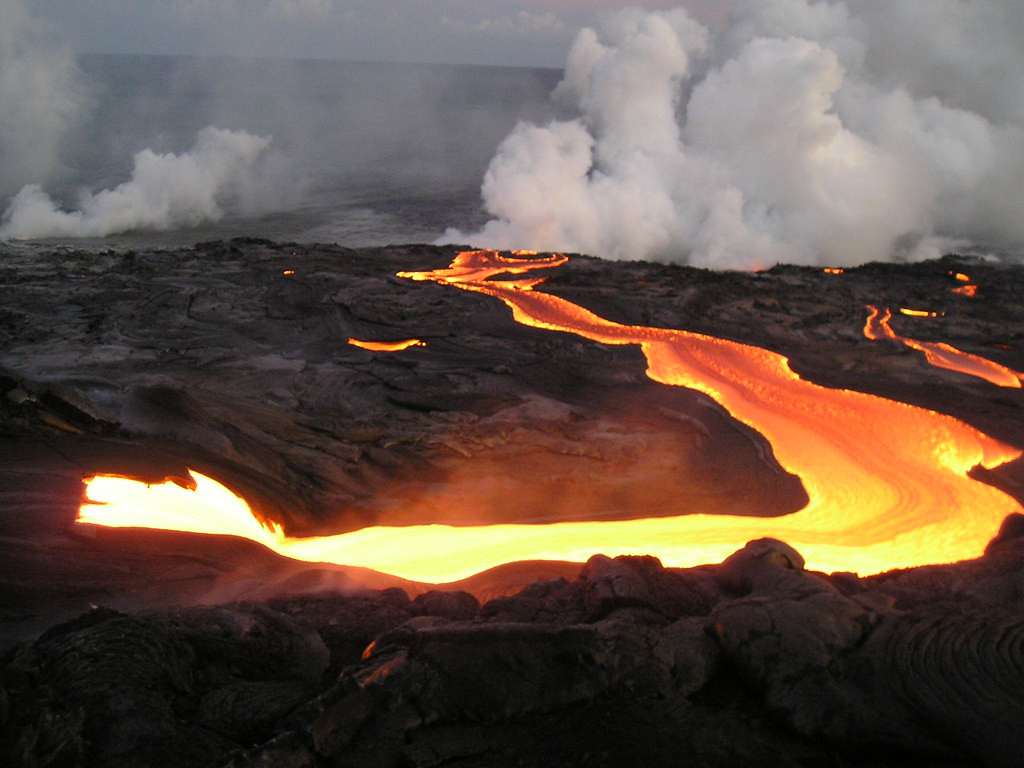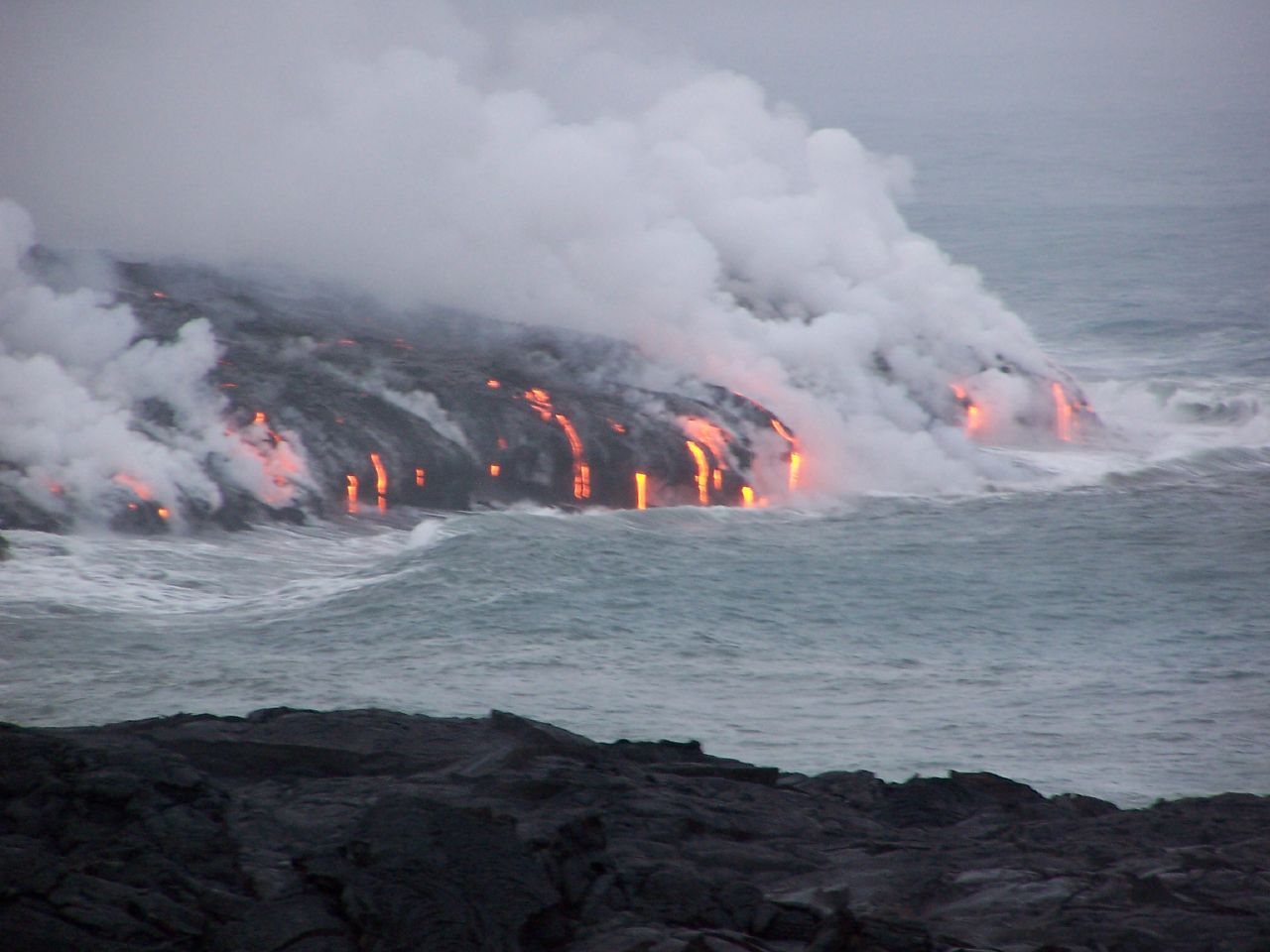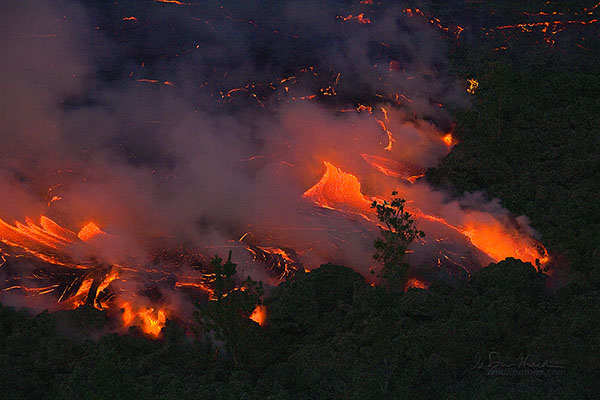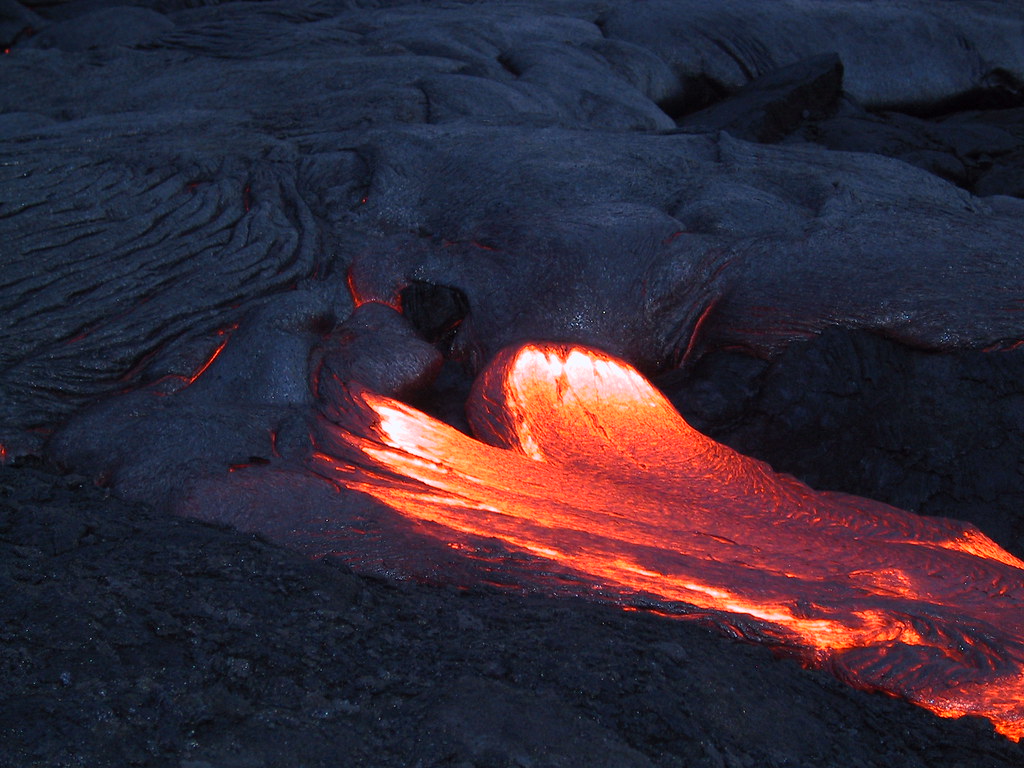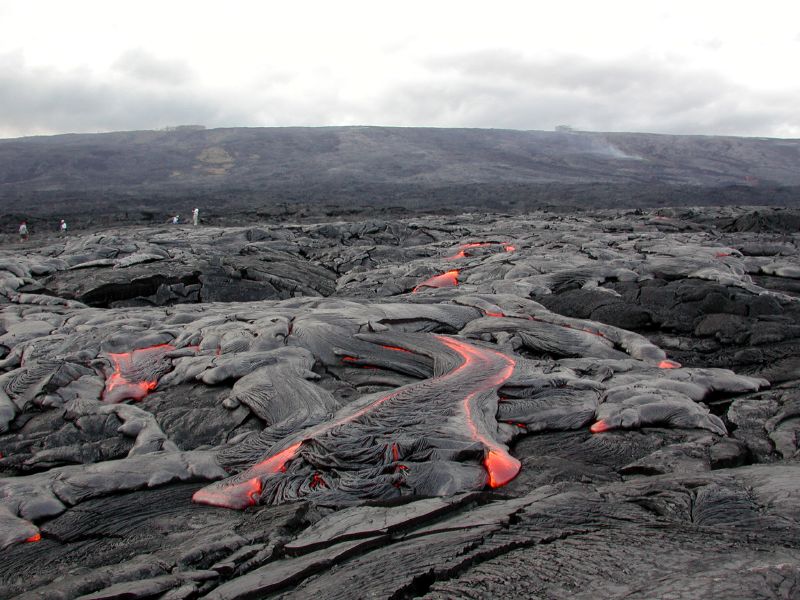Opened in 1916 as a result of 70,000,000 years of volcanic activity, migration and evolution of a land pushed to the surface of the water by complex processes that are as old as the planet, the Hawaii Volcanoes National Park is the cradle of a spectacular nature manifest.
The park stretches over 13,677 feet of volcanic soil, separated at the sea level by the tallest volcanic mountain in the world – the famous Mauna Loa.
Here, the tourists can admire from the helicopter Kilauea- the one that never sleeps – the continuously erupting volcano offering the visitors of the “Aloha†island dramatic volcanic images.
The Hawaiian volcanoes are built as a slightly inclined shield; having in the middle a wet climate created by the rapid flow of steam resulted from the lava eruption.
Kilauea is a spectacular view from the helicopter. Its activity created almost 500 ha of fertile soil that is crossed all through the year by red-orange melted lava. The Hawaii Volcanoes National Park can be visited by car for the amateur of driving but the most spectacular view is the one from the sky. They try, but even the most amazing photos in brochures and online are nothing like experiencing this in person.
Here are 25 of those spectacular views of Hawaii Volcanoes.
( photo by jhawkcurt )
( photo by Madison76 )
( photo by Californie )
( photo by aprilandrandy )
( photo by wildphotons )
( photo by Vincent Ma )
( photo by niiiichola )
( photo by Striderv )
( photo by Striderv )
( photo by dannotti )
( photo by Walt K )

Camping Destinations In The US
( photo by tgartworks )
( photo by Striderv )
( photo by perturb )

( photo by atacamaphoto )

World’s Best Adventure Vacations
( photo by volcano-hawaii )

(Â photo by wappingersschools )

( photo by volcano-hawaii )

( photo by tobasai )

( photo by visitusa )
( photo by stormchaser )
( photos by geog.ucsb )
( photo by Burner Photography)

